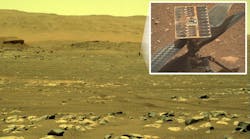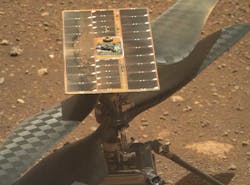We all held our breath for the 39 sec. that NASA’s Ingenuity Mars Helicopter took flight on Mars on April 19. This was a historic event that came from years and years of research and testing from every organization from consumer electronics to government. The 4 lb., solar-powered helicopter reached a height of 10 ft, which it couldn’t have done without the help of six specialized brushed DC motors from maxon.
The specially designed motors were armed with 10-mm drives that controlled the pitch of the rotor blades and the direction of flight for the helicopter. Ingenuity had to be as light as possible due to the atmospheric conditions (or lack thereof) of the Red Planet. The rotor blades had to cut through fewer air molecules to maintain flight.
"The biggest challenge in developing the motors was the extreme weight requirement," said Aiko Stenzel, design engineer at maxon, in a press release. “Every tenth of a gram had to be saved to make the helicopter fly.”
There are also 10 maxon brushless DC (BLDC) drives built into Ingenuity and a customized gearbox that will be used to handle the soil samples inside the Perseverance Rover.
According to a NASA press release, the second experimental flight will be scheduled for no earlier than April 22. Should the helicopter survive, the Ingenuity team will determine how to expand its flight profile for future flights.

